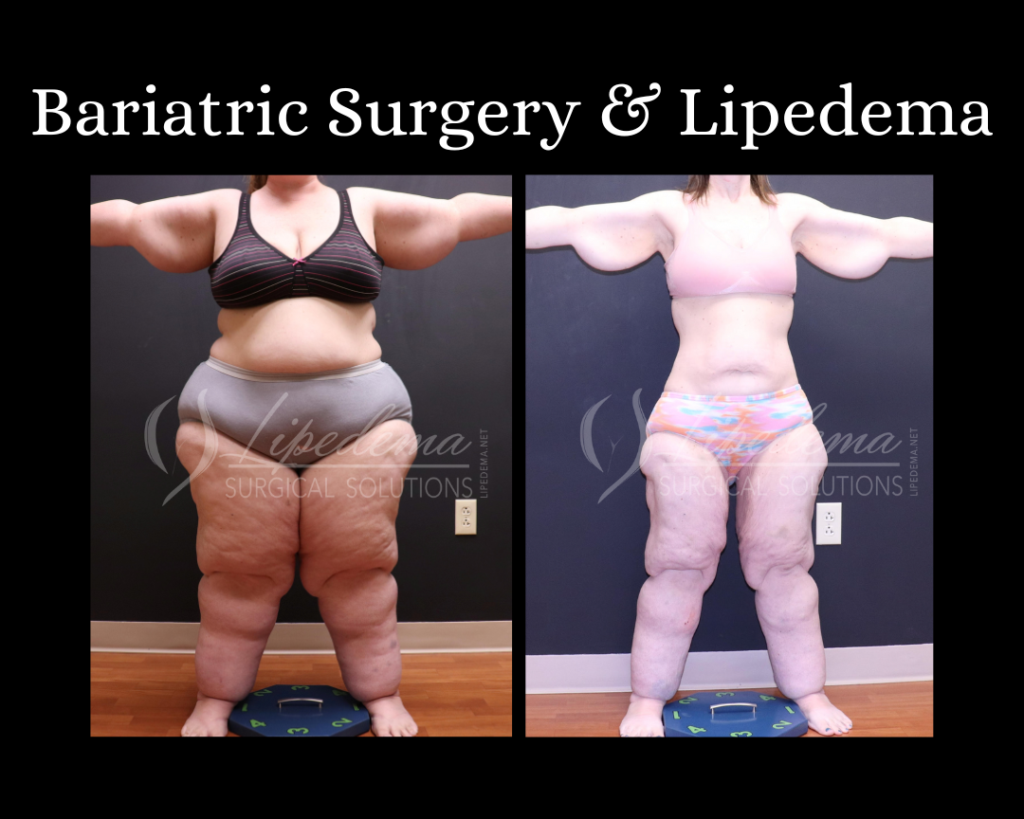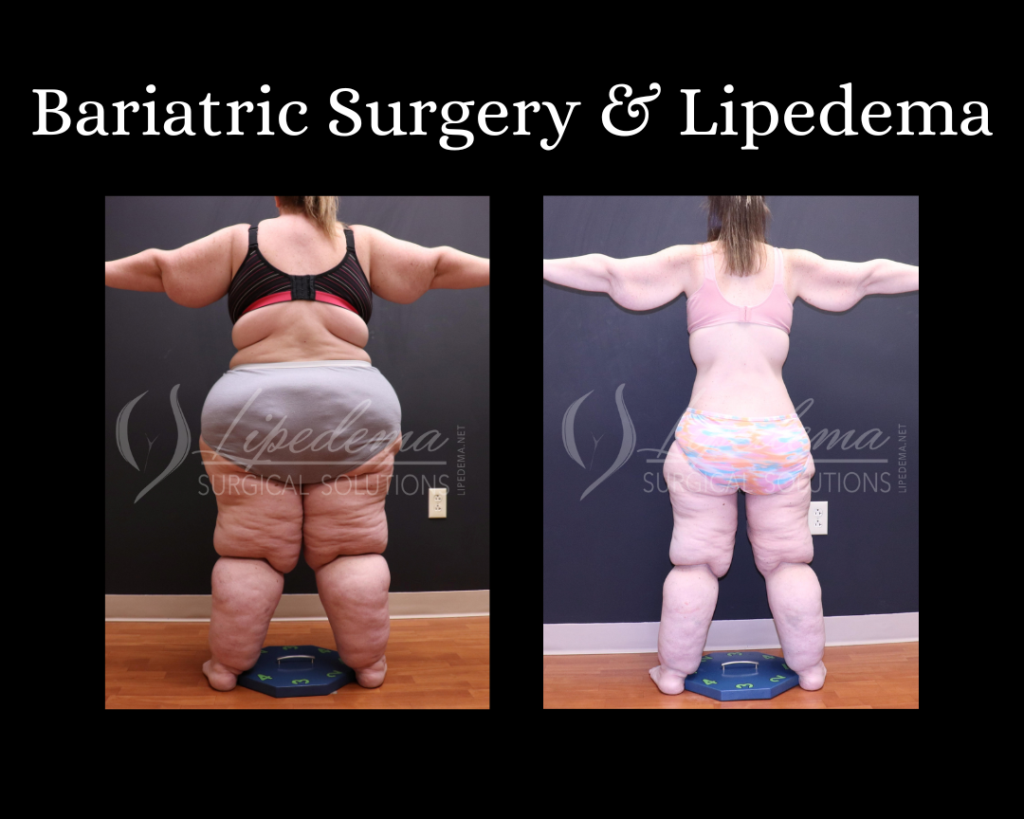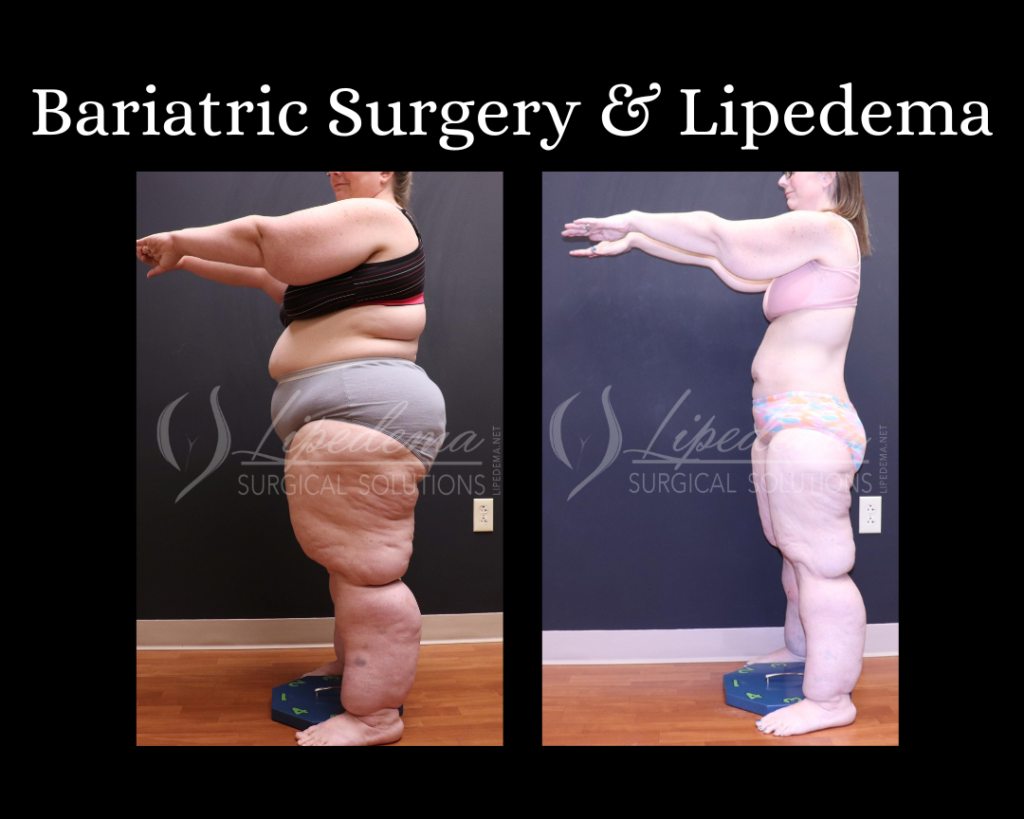When Two Conditions Overlap
Lipedema can often be hidden when obesity is present. This overlap creates unique challenges for both patients and healthcare providers, as the disproportionate fat distribution characteristic of lipedema may be masked by generalized weight gain.
Both bariatric surgeons and patients considering weight loss surgery must understand that lipedema and obesity can, and often do, coexist.

Why Address Obesity First
When both conditions are present, comprehensive lipedema treatment should prioritize addressing obesity before proceeding to lipedema-specific interventions. This approach is critical for several reasons:
- Obesity accelerates lipedema progression. The additional metabolic stress and inflammation associated with obesity can worsen the underlying pathophysiology of lipedema, leading to faster disease advancement.
- Obesity increases lipedema recurrence after surgery. Patients who undergo lipedema reduction surgery without first addressing underlying obesity face higher rates of tissue regrowth and symptom return.
- Conservative treatments work better at lower weights. Compression therapy, exercise, and lymphatic drainage are more effective when not competing against the mechanical burden of excess weight.
Failing to implement comprehensive conservative treatment measures, including obesity management, often leads to poor surgical outcomes and unsuccessful procedures.
Setting Realistic Expectations
Patients with both lipedema and obesity need to understand that bariatric surgery will have different results compared to those with obesity alone:
- Weight loss patterns will differ. While bariatric surgery effectively reduces overall body weight, the lipedematous tissue in the legs and arms may not respond proportionally to the reduction in weight. Patients should expect more modest changes in these areas compared to someone with pure obesity.
- Symptom relief may be incomplete. Leg pain, swelling, and tenderness characteristic of lipedema may persist even after successful weight loss surgery. While some patients experience improvement, others find these symptoms unchanged despite significant overall weight reduction.
- Additional treatments may be necessary. Even after successful bariatric surgery, patients may still require lipedema-specific interventions such as compression therapy, manual lymphatic drainage, or specialized surgical procedures.

Case Study: When Bariatric Surgery Reveals Hidden Lipedema
T, a 39-year-old woman, illustrates the complex relationship between these conditions. Her symptoms began during her first pregnancy, with progressive leg enlargement and weight gain through subsequent pregnancies. Despite multiple attempts at dieting and calorie restriction, she struggled with weight loss.
Initial Presentation:
- Weight: 318 pounds
- Bilateral leg pain and swelling
- Disproportionate tissue distribution in arms and legs
- Non-pitting edema in ankles, calves, thighs, and arms
- Tender, nodular subcutaneous tissue on palpation
- Skin lobules on knees, inner thighs, lateral thighs, and upper arms
- Wrist and ankle cuffs present
- Joint hypermobility (Beighton score: 9/9)

Diagnosis:
- Type 3, Stage 3 lipedema of the legs
- Type 4, Stage 3 lipedema of the arms
- Class 3 obesity
Treatment and Results: T underwent a loop duodenal switch bariatric surgery, combining sleeve gastrectomy with duodenal switch. The results demonstrated the complex interplay between obesity and lipedema:
Successful Weight Loss:
- Lost over 156 pounds
- Body fat percentage decreased from 56.7% to 36.6%
Persistent Lipedema Indicators:
- Total body extracellular water to total body water ratio (ECW/TBW) increased from 0.402 to 0.430
- Segmental leg measurements showed significantly abnormal ratios:
- Right leg ECW/TBW: 0.442
- Left leg ECW/TBW: 0.445
- Leg swelling persisted despite weight loss and daily medical-grade compression
- Leg pain and tenderness continued unchanged
Despite successful bariatric surgery and adherence to conservative treatments, T’s lipedema symptoms remained significant enough that she elected to pursue lipedema reduction surgery for further symptom management.

Key Takeaways for Patients and Providers
For Patients:
- Bariatric surgery is an important first step when both conditions are present
- Expect different weight loss patterns in lipedematous areas
- Symptoms may improve but might not completely resolve
- Additional specialized treatments may still be necessary
For Healthcare Providers:
- Screen for lipedema in bariatric surgery candidates
- Set appropriate expectations about outcomes
- Coordinate care between bariatric and lipedema specialists
- Monitor for persistent symptoms that may indicate underlying lipedema
For Treatment Planning:
- Address obesity before lipedema-specific interventions
- Implement comprehensive conservative measures
- Consider staged treatment approaches
- Plan for the potential need for additional therapies
Understanding the relationship between bariatric surgery and lipedema ensures that patients receive comprehensive care addressing both conditions, leading to better outcomes and more realistic expectations throughout their treatment journey.
